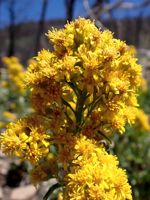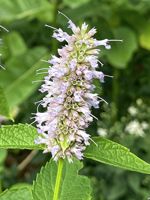Mon-Fri 9am - 5pm Mountain time
Missouri Goldenrod vs Anise Hyssop
Solidago missouriensis
Agastache foeniculum
NOT AVAILABLE THIS SEASON - MIGHT RETURN
NOT AVAILABLE THIS SEASON - MIGHT RETURN
Missouri Goldenrod is a native perennial wildflower known for its brilliant golden yellow flowers that bloom from late summer to early fall. The flower heads contain hundreds of tiny blossoms that attract a wide variety of pollinators, including bees, butterflies, and other beneficial insects. Fully opened flowers can also be used to make tea. As the season progresses, the flowers give way to fluffy seed heads, providing food for birds.
It can spread readily through its roots and self-seeding, this make Missouri Goldenrod well suited for hard-to-grow areas. This vigorous growth habit makes it an excellent choice for large planting areas, wildflower gardens, naturalized projects, prairie restoration, and erosion control.
Anise Hyssop is a native perennial wildflower known for its fragrant spikes of small purple flowers. This plant is an excellent source of nectar and is highly attractive to a variety of bees and other pollinators. Deadheading spent flowers will encourage more blooms throughout the season.
Its aromatic leaves release an anise-like (licorice) scent when crushed. Both the leaves and seeds are edible and have been used in teas and as flavouring. Leaves can be harvested at any time, though the oil content is highest just past full bloom. Deer tend to avoid Anise Hyssop because of its strong-smelling leaves. This makes it a useful plant for positioning as a protective border around more vulnerable species.
Anise Hyssop spreads by seeds and rhizomes, but is less aggressive than other members of the mint family and is easy to remove if needed. Historically, it was planted in large numbers as a honey plant to support apiaries. Birds also feed on its seeds, adding to its ecological value.

